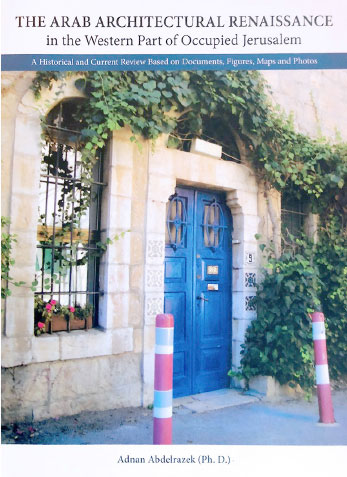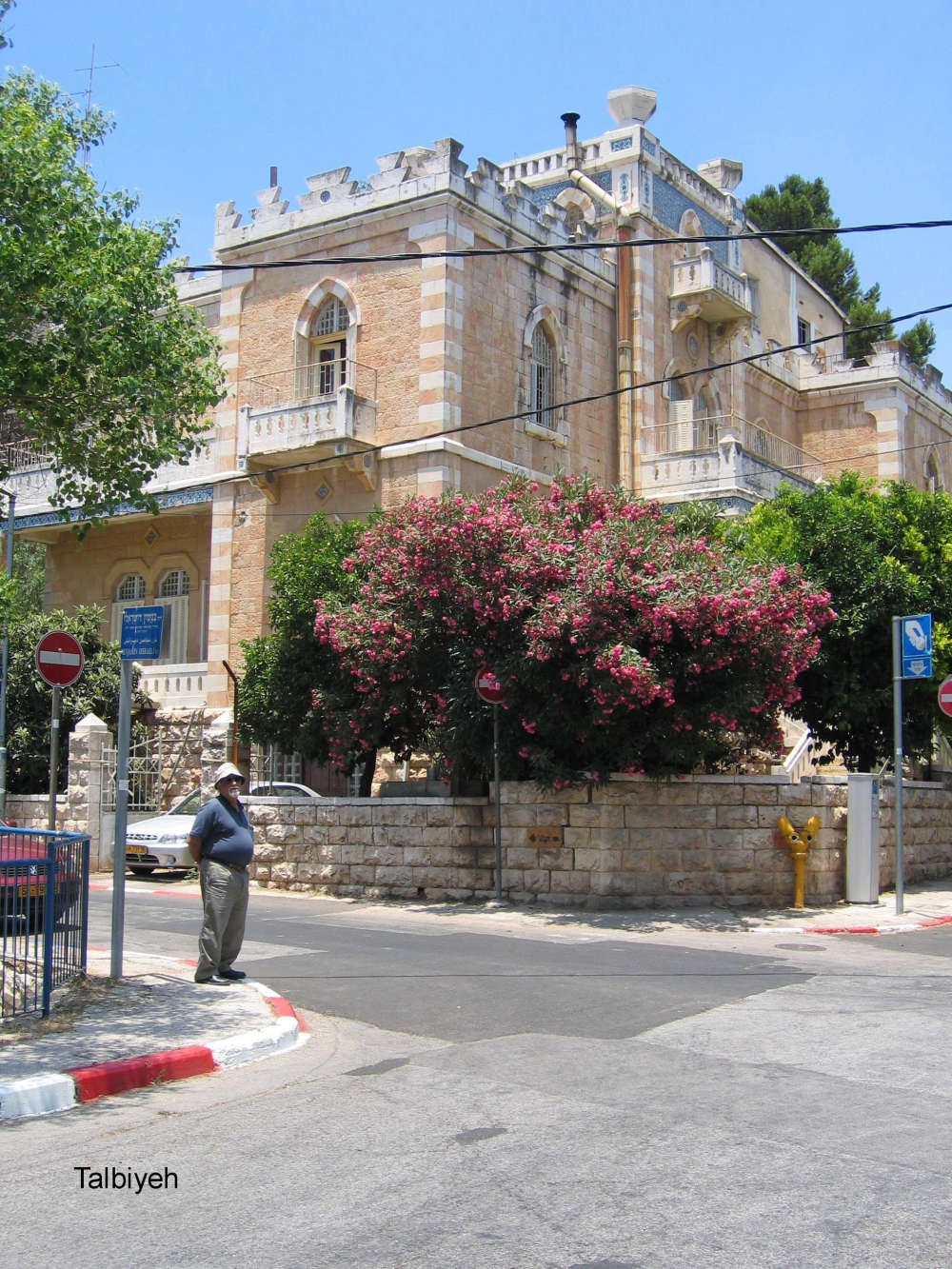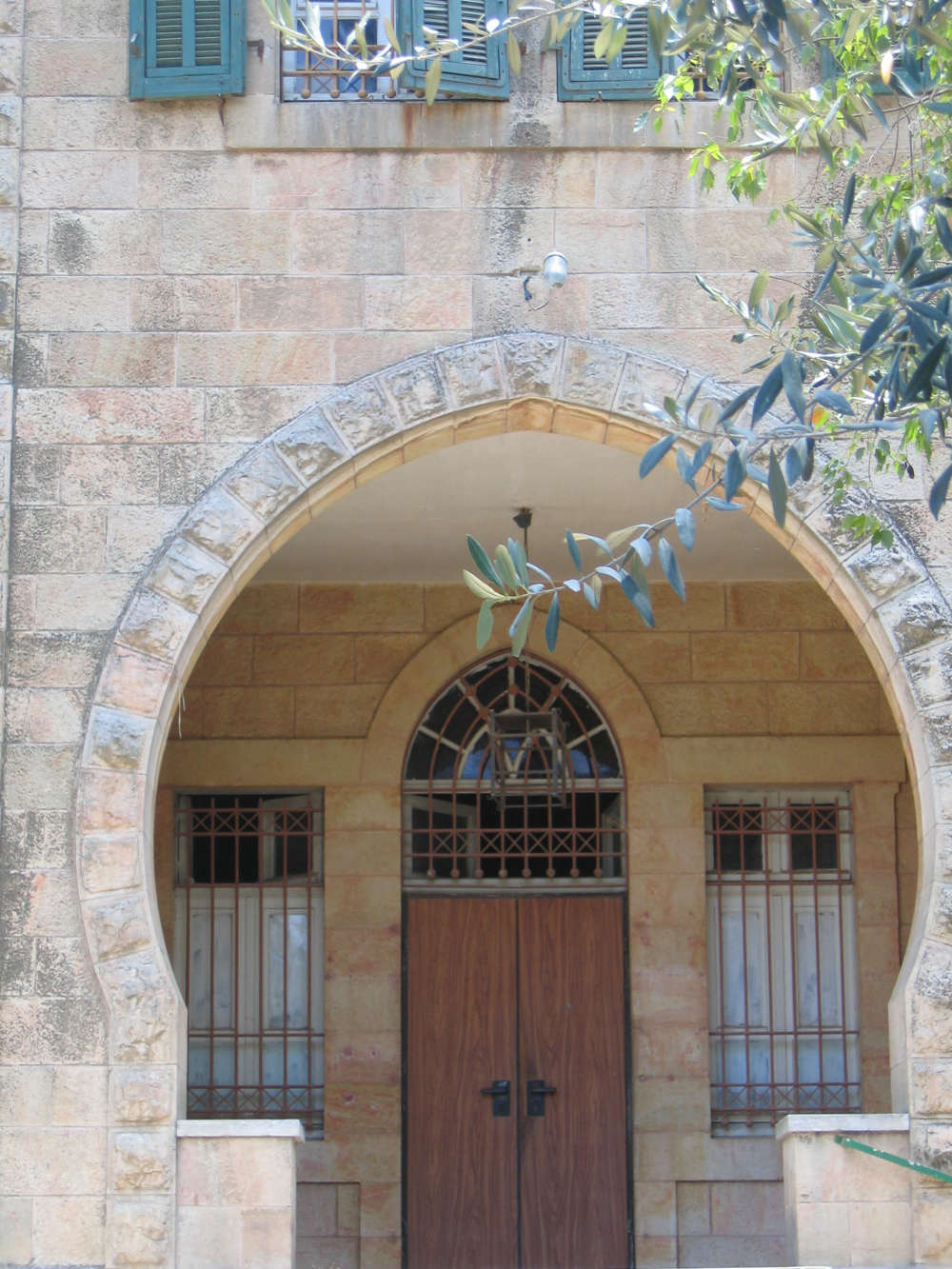A Historical and Current Review Based on Documents, Figures, Maps and Photos
By Adnan Abdelrazek, PhD
Rimal Books, 2018, 112 pages, US$ 20
Three years of field study and literature review have culminated in The Arab Architectural Renaissance. This book presents the creativity that characterizes the architecture and urban development in what since 1948 has become known as the western part of occupied Jerusalem. It is an exploration of the potential of Palestinians when given genuine opportunities and appropriate incentives to excel in various fields of community development. The author aims to present evidence to counter the Zionist-orchestrated propaganda that claims that Palestine was a “land without people.” The resulting book lays out a different reality.
By the end of the Ottoman Empire, throughout the British Mandate, and until the war of 1947/49, Palestinian cities and towns flourished with remarkable architectural design and unique-quality urban development, notably in the New City of Jerusalem, located outside the walls of the Old City. The great Arab architectural renaissance of this time affected the construction style of houses, architectural conservation methods, and management of space in Palestine. It made use of rich material and decorative elements, demonstrating the effort to integrate Islamic and Mediterranean style with modern functional requirements in order to create its own distinctive style. Palestinian Jerusalemite families invested in highly individualized architecture that featured creative stone design around doors and windows, and stylized façades, as buildings were decorated with arched windows, columns, and multiple balconies and verandas. In some cases, pink limestone was applied to symmetrically trim windows and doorframes, balconies, and corners. Much of the gray or colored stone came from the famous limestone quarries in the Jerusalem area.
The reviewed Palestinian neighborhoods, which in 1948 fell under Israeli occupation, demonstrate the New City’s development and stand as remarkable evidence to the claim of this renaissance. At the time, these 12 quarters formed a continuous area of Arab housing that extended to the south and southwest of Jaffa Gate. It was part of the architectural renovation of the Arab built environment to the north, west, and south of the Old City walls that took place roughly between 1860 and 1946. At the end of the Ottoman Era, family-owned and public buildings outside the walled city showed clearly differentiated styles. Dwellings constructed by foreign Christian institutions were large in scale and displayed a European character. They served mostly to accommodate Christian pilgrims, hospitals, and schools, and their uniqueness endures in places such as Notre Dame Center, the Russian compound, the Italian Hospital, and more. Private Arab castles and houses, however, display a clearly Arab/Middle Eastern style; they served as family homes for elite Jerusalemite families and include the Orient House, the Rabah Husseini castle, currently the American Colony Hotel, and the Nashashibi castle, to name just a few. The third housing type outside the city walls constituted the densely populated Jewish neighborhoods that accommodated poor communities and Jewish pilgrims, such as Mea Shearim, Bati Ongrin, Nahlat Tzvi, and others.
The British Mandate administration designed plans that outlined five major zones in an effort to modernize and legalize the construction of city buildings, roads, and the public domain. Simultaneously, it prepared for the implementation of the Zionist scheme of establishing a Jewish national home in Palestine and Jerusalem. This triggered Arab resistance, which culminated in the 1936/39 revolt. The book briefly reviews the 1936 Palestinian General Strike and subsequent developments.
The colonial scheme and the disastrous ramifications of the Nakba began with the imposition of the Partition Plan in Palestine. Orchestrated by the Zionist movement and its Western allies, it resulted in the creation of Israel on the majority of historical Palestine. During the 1947/49 war and shortly after, Palestinians lost close to 78 percent of their land, and more than 50 percent of the population were driven from their homes. The study sheds light on the cleansing of the Palestinian population from the western areas of occupied Jerusalem and the appropriation of their houses and property. The book ends by displaying in numbers the superiority of the Arab architectural renaissance before 1948 over the construction that took place after 1948 in the Jewish parts of the city.




